|
|
A Buckminster Fuller approach
Toothpick Bridge
|
|
After posting the page on my son's toothpick bridge, I heard
from another father in Quebec, facing a similar task with a completely different
set of rules.
It brings to mind a good friend of mine, Kent Bellows' comment,
who said,"I've been though aLOT of these school projects and before you
do anything, get a set of written instructions!"
True.
This father in Quebec decided to use an almost honeycomb like
structure. The rules in that contest required round toothpicks to
be used. The span was 25cm. A sane testing approach using sand in
a bucket tied to the center of the bridge will be employed when the
time comes.
In the meantime, I will post some pictures of their design.
The design, I believe, is based on building blocks of equilateral
triangles and pyramids. Buckminster Fuller wrote extensively about
Geodesy and tensegrity, and I am sure that it is among his writings
that I saw him tout these triangular shapes as some of the strongest.
The triangle, the simplest area defined by straight lines.
|
|
Buckminster Fuller Approach Bridge-Design
|
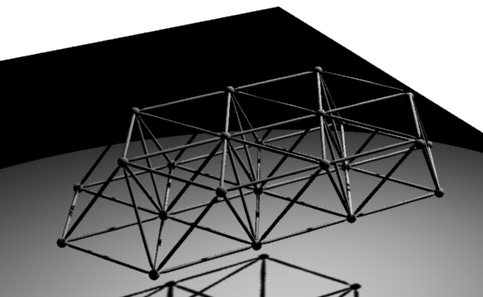 |
|
|
This design uses equilateral triangles in two rows on the bottom.
There are 4 points, 5 points, and 4 points, on three parallel lines.
through the bottom plane.
Above the same scheme is one point less on each line, so a pattern
of 3,4,3 results. The upper is connected to the lower by equilateral
pyramids of 4 sides ( three sides and a base).
This deceptively simple repeating pattern mimicks nature and creates
a strong grid in three dimensions.
|
|
The Toothpick Bridge-Construction
|
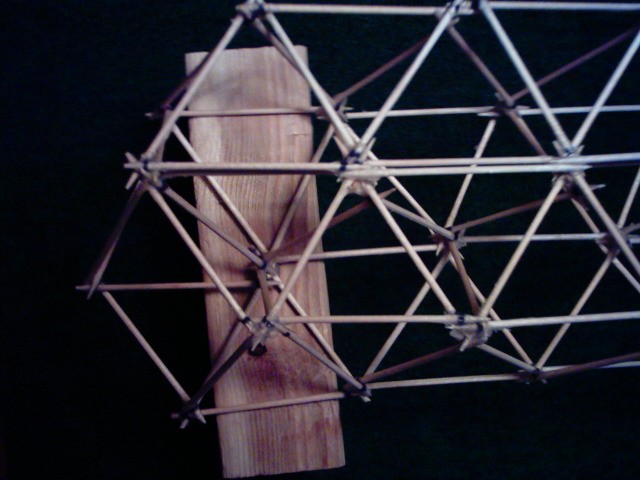 |
Construction technique is of great importance to success.
|
|
Each strut is a single, round toothpick.
|
 |
|
|
When finished, this span weighs less than 25g. One tip I learned from their
experience is that there are better grades of white glue. It is fairly obvious
that there is a great deal of stress on the glue joints in a design such as this.
|
|
Try some loading.
|
 |
|
A board distrbutes the load, but also helps 'span' the chasm.
|
|
Few toothpicks for this design.
|
 |
|
|
A mere 126 toothpicks make up this entire bridge. The actual toothpick
bridge has 7,8, and 7 nodes on the bottom and top, instead of the 4,5, and 4
mentioned above.
So far, testing has been done with a pine board distributing the load.
While this might be instructive in a general way, it only stress the the
bridge in a compression mode. The tension resulting from spanning from
both sides and using a 'point source' for the load may end up causing
some surprizing results. First, when the bridge, which is essencially a
truss, is loaded in the middle, there will be a 'moment' associated with
the load and its distance from a side. The moment is what makes a lever
so effective. Think of a load in the center of the bridge as a sort of
pressing on a lever. The further away from the edge, the more difficult it
is for the truss to withstand the force.
Also, when loaded in the middle, the upper edge of the truss will be
in compression and lower surface will be in tension. ( hence the importance
of the glue strength!)
We shall see, below, how this bridge survives. One thing for sure,
the rules seem to vary quite a bit in different versions of this classic
and instructive problem.
|
|
Quebec Bridge survives! ...
|
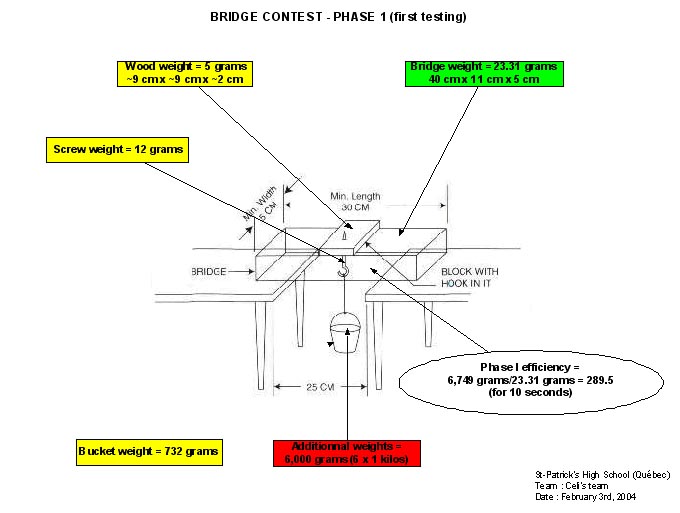 |
|
|
The Quebec bridge has passed the first round of testing. ( see the
test setup above) At 6.75 kg, the weight was around 15 lbs. This is
a significant test.
|
 |
|
|
... only to be crushed.
|
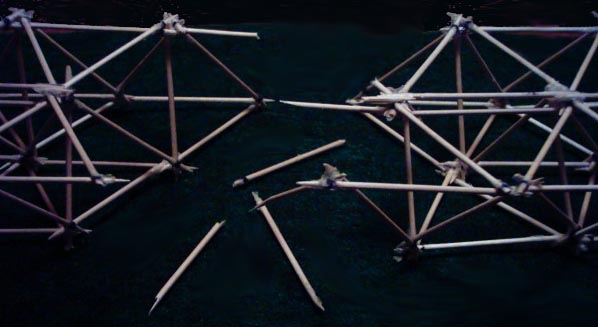 |
|
|
Well, the father from Quebec has sent me the last word on his project. The
above picture tells it all. After surpassing the 27 lb. test, the tiny bridge
collapsed at 35 lbs. A very respectable showing.
Now for the autopsy. The narrow moment across the beam put the most
stress on the bottom row in tension. There is also a tendency for the wieght
to exert a rotational force, snapping the bridge, and its individual members,
like a twig. From the photos, it appears the toothpicks snapped. The glue joints
seem to have held!!
It seems there was a particularly good brand of white glue available up in
Canada. In some competitions, certain glues are disqualified. Check the rules
before using any exotic glues.
I would like to thank our French Canadian father-son team for this story.
We can learn alot from their experience, as I am sure they have.
|
While you're here, let me know what you think of this page in an
email.
If you would be interested in more detailed instructions
or other designs, let me know that as well. I would like to hear
about the rules for various contests and how the grading and
testing is done. My name is
and just click on it for my email.
|
|Home|
|Pi details|
|About stone|
|The Inventions|
|Music Store
|More Hugh|
| | |

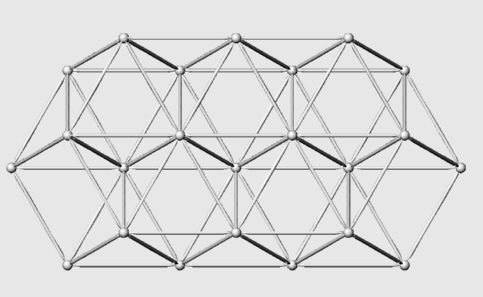 Lars' Creative Warehouse
Lars' Creative Warehouse

 Lars' Creative Warehouse
Lars' Creative Warehouse